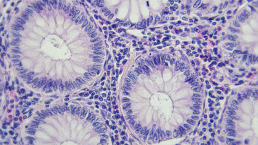
Insight from MDPI Top 5 Picks: November
For November’s top 5 most-read articles, we found that human health was the main theme. Research topics ranged from diet and fasting to fentanyl addiction, all with important implications for healthcare. In a different direction, one study developed a remote sensing technique to identify areas of copper mineralization. This method was highly accurate and can be applied to other metallurgic provinces worldwide. We explore the implications of these studies below.
An Immunconjugate Vaccine Alters Distribution and Reduces the Antinociceptive, Behavioral and Physiological Effects of Fentanyl in Male and Female Rats
This study discusses the potential of developing a vaccine immunotherapy for fentanyl-related disorders. Fentanyl (FEN), a synthetic opioid, is an incredibly potent substance responsible for many drug overdose deaths. The immunotherapy discussed in this paper specifically targets FEN and is shown to reduce FEN levels in the brain post administration in male and female rats. This prevents the “high” experienced when taking fentanyl, which has great significance for human health and opiate dependence.
The vaccine formulation presented in this paper is also shown to reduce many other effects of FEN. For example, FEN-induced analgesia, rate-disrupting effects on schedule-controlled responses, and physiological effects are all reduced. Hence, it could potentially be used to treat patients with opioid-use disorder and prevent fentanyl overdoses, a significant step for healthcare.
Does Timing Matter? A Narrative Review of Intermittent Fasting Variants and Their Effects on Bodyweight and Body Composition
“Our motivation to cover the topic of intermittent fasting (IF) was three-fold.
First, there has been an observational consistency of the successful implementation of IF for many clinical and non-clinical goals. These observations occurred alongside mounting research evidence supporting the effectiveness of IF within these domains. It is a viable (and seemingly sustainable) alternative to conventional/linear dietary patterns. IF repeatedly showed improvements in health markers compared to usual/habitual dietary habits via its default to lower energy intake. Importantly, IF showed a comparable performance to daily caloric restriction in terms of reducing total body mass and fat mass. It also did so in terms of improving a range of cardiometabolic health indexes.
Secondly, it became apparent that IF was not a simple, monolithic endeavor. It’s more like a highway with several lanes. So, a second aim of our review was to facilitate the understanding of IF by organizing its most common variants in a systematic way – intra-week (alternate-day fasting, twice-weekly fasting) and intra-day (early time-restricted feeding, delayed time-restricted feeding). We then summarized the body composition findings of each variant. Establishing this framework will help researchers, practitioners/clinicians, and the general public make sense of an otherwise complex mix of variables.
The final motive of our paper was to provide evidence-based practical recommendations and guidelines. The literature is abundant with IF data, but sparse in actionable items. Being active practitioners in the field, it was important for us to not merely relay the data, but also distil it down to concrete directions for clinicians, coaches, and enthusiasts. The existing body of IF protocols in the literature have significant room for improvement in terms of dietary adjustments that are conducive to lean mass preservation.”
– Statement from authors Alan A. Aragon and Brad J. Schoenfeld
Neuro-Fuzzy-AHP (NFAHP) Technique for Copper Exploration Using Advanced Spaceborne Thermal Emission and Reflection Radiometer (ASTER) and Geological Datasets in the Sahlabad Mining Area, East Iran
This study identifies potential zones of high volcanic massive sulfide (VMS) copper mineralization in the Sahlabad mining area in eastern Iran. The authors fused geological and remote sensing datasets using the Neuro-Fuzzy-AHP (NFAHP) technique. They also considered various exploration factors. It was shown that these factors can be used to identify areas of copper mineralization with high accuracy.
The authors created a map highlighting these areas and its results were verified. It was shown that the NFAHP technique was able to accurately predict high-potential areas. Given the technique’s success, it could be applied to many other metallogenic provinces around the world.
Degradative Effect of Nattokinase on Spike Protein of SARS-CoV-2
“Natto is a popular traditional Japanese food that is produced by fermenting soybeans with Bacillus subtilis var. natto. Natto contains nattokinase, which exhibits antithrombotic and fibrinolytic activities. Notably, natto extract has been reported to inhibit SARS-CoV-2 infection in Vero E6 cells via receptor-binding domain degradation. In this study, we demonstrated a new functional effect of nattokinase, a serine protease: degradation of the S protein of severe acquired respiratory syndrome coronavirus 2 (SARS-CoV-2) in the non-toxic concentration range.
Nattokinase has the potential to inhibit SARS-CoV-2 host cell entry via S-protein degradation. The protease activity of nattokinase plays a crucial role in S-protein degradation. Further, patients with coronavirus disease 2019 (COVID-19) who have hypertension or cardiovascular comorbidities are likely to develop severe disease course and progression. Hospitalized patients with COVID-19 are at an increased risk of thromboembolic events owing to the procoagulant state. Natto has a unique taste and odor, and some people dislike eating it. Nattokinase lacks the characteristic smell of natto and is easy to consume. Nattokinase and natto extracts have the potential to be part of a new generation of drugs for the prevention and treatment of COVID-19.”
– Statement from authors Masashi Kitamura and Takashi Tanikawa
Postprandial Responses to a Standardised Meal in Hypertension: The Mediatory Role of Visceral Fat Mass
In this paper, the blood triglyceride, glucose, insulin, and glycoprotein acetylation levels of normotensive and hypertensive patients were assessed and compared. Multiple blood samples were collected from participants in a fasted state, after a meal, and again after a second meal. The researchers also measured blood pressure and adiposity.
The researchers found that individuals with hypertension had a disrupted metabolic state when fasting. After eating a meal, they had significantly higher levels of insulin, triglycerides, and inflammatory markers than normotensive participants. The authors found that insulinaemic and lipaemic responses were partially mediated by visceral fat mass (VFM). Therefore, they suggest focusing on reducing VFM in future treatments to improve human health.
If you want to find out more about any of the studies mentioned in this article, you can read them for free on the MDPI website.










